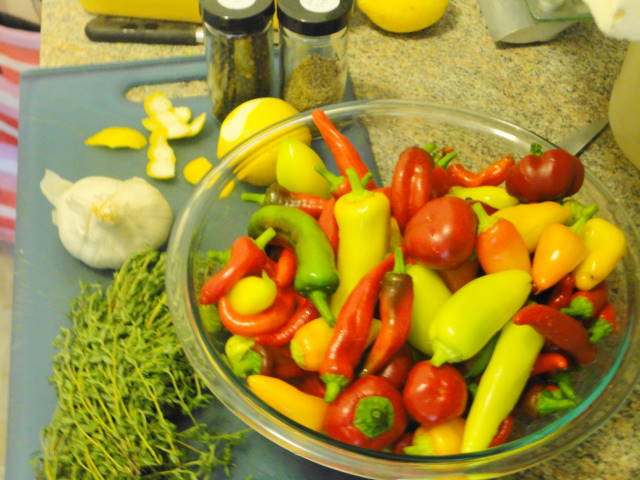
GPS Farm Stand
This Summer, I added a new stop to my weekly Farmer’s Market rounds. In a good week I am able to visit the Pike Place Market at least once, the University Market on Saturday and either Columbia City (Wednesdays) or Madrona (Fridays) or Broadway (Sundays) once. This year, however, stopping at Madrona means one can often check out the farm stand set up by Green Plate Special across ML King way from the main market. The kids running the stand are always a pleasure (although sometimes a little sketchy on pricing, and in need of a nudge from GPS director Laura Dewell to avoid undercharging) and the stand features beautiful and sometimes unusual produce (Portuguese cabbage anyone? Yes, and it was delicious, more like collards than cabbage).
Time to Pickle Peppers
A late August stop at the GPS stand yielded a tempting mix of hot and sweet peppers and the inspiration for a summer pickling project. In pickling vegetables, the most difficult part is often deciding how to go about it. As noted in my post on pickled asparagus, you can cook the vegetable in question, then pack it wit a hot vinegar mix and leave the jars to cool upside down as with jam making. Alternately, you can pack the vegetable raw, then add hot vinegar mix and boil the closed jars in a canner for 15 minutes. The choice depends on what you hope the final result will be like and how the veg in question takes to certain kinds of cooking. For asparagus, my aim is that the stems will just be cooked through; therefore, I blanch, then pack hot without further boiling. The idea of blanching peppers doesn’t seem quite right to me, so I figured why not just let them cook as the jars seal? That means raw pack and 15 minutes in the canner.
With the method decided, the only question left is the composition of my pickling liquid or brine. Based on advice in Putting Food By by Greene, Hertzberg and Vaughan, I decided to use a 50/50 mix of water and white wine vinegar with the addition of 1 teaspoon of salt to each cup of vinegar. As for flavorings, the choice is purely personal. I used garlic, thyme, lemon peel, anise seeds and black pepper. Note that as vinegar is unstable at high heat, one should avoid boiling your bring hard for any length of time. I find simmering at about 150 degrees for 5 minutes to be sufficient to make sure that the salt is all dissolved into the brine.
Once the brine is ready, the jars are tightly packed (vegetables tend to shrink during cooking and we want the finished jars to look full) with peppers and the garlic, thyme and spices added. The hot brine is ladled in, leaving a 1/2″ head space and the jars tightly closed with 2 piece lids.
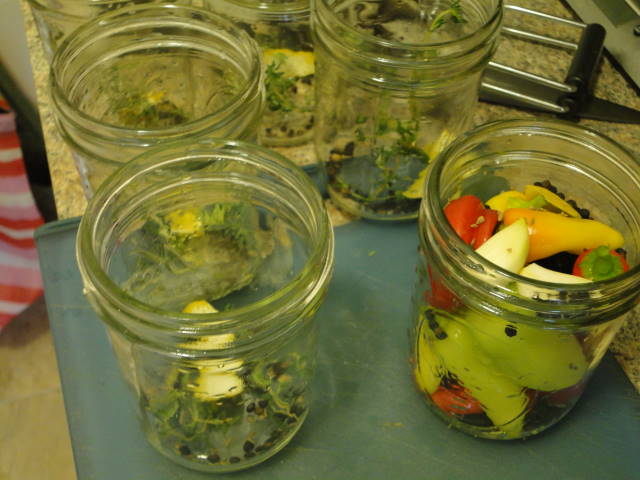
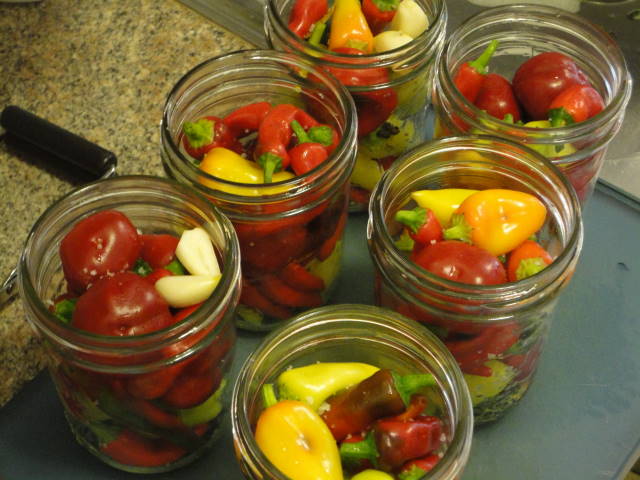
Then the jars go into the canner to cook at between 180 and 185 degrees F for 15 minutes.
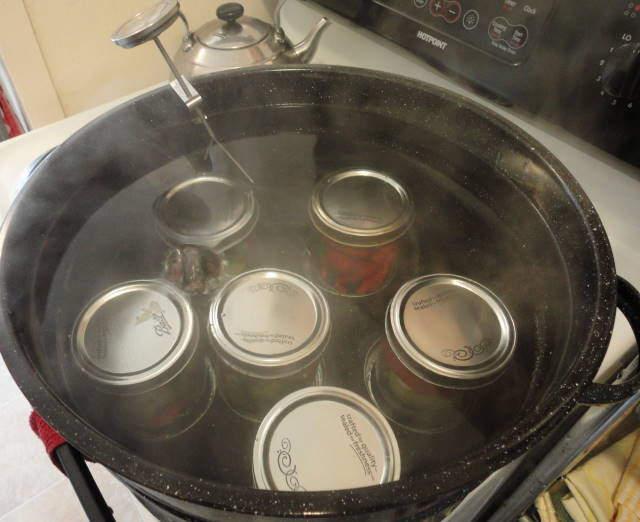
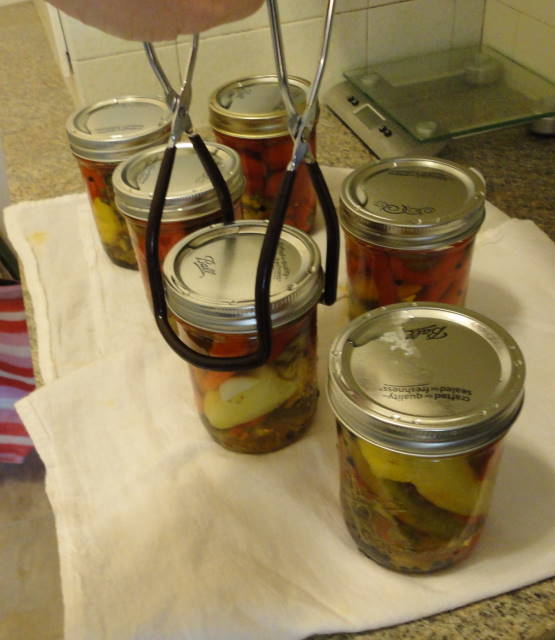
The jars are then left to cool overnight. The next day, I check the seal by lifting the jars by their lids with the ring removed (100% successful this time…if that is not the case, you are either faced with trying to re-seal, with the result likely being finished peppers that are overcooked and to soft, or just leaving the unsealed jar in the fridge for a few weeks and then eating the peppers.)
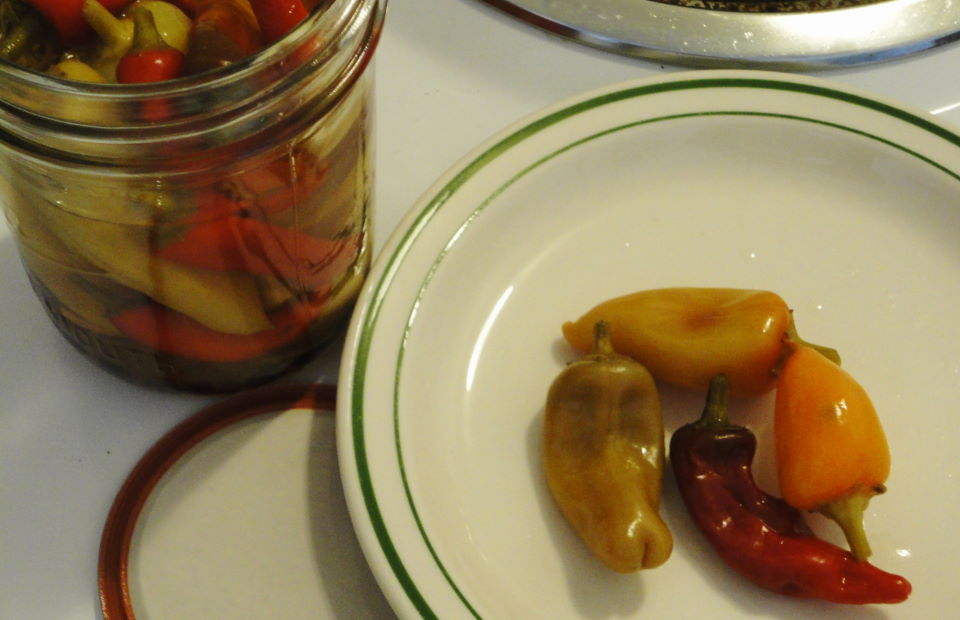
In order the let the salt and vinegar do their magic on the peppers, it is usually recommended to wait about a month before eating. So here I am this morning, October 2nd and ready to try my peppers. The verdict? Spicy! But good. The peppers still have a nice crunch, and the level of saltiness and acidity seems about right. We will be enjoying the fruits of Green Plate Special’s labors all winter long.
Full recipe to follow soon.
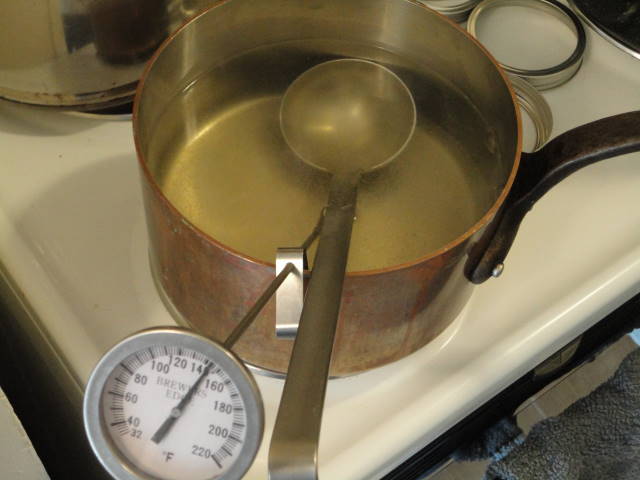
and thanks for supporting us and keeping our crew on their (new) game! it was a great year for cooking, giving away and selling our produce! We love Pichet and Presse!